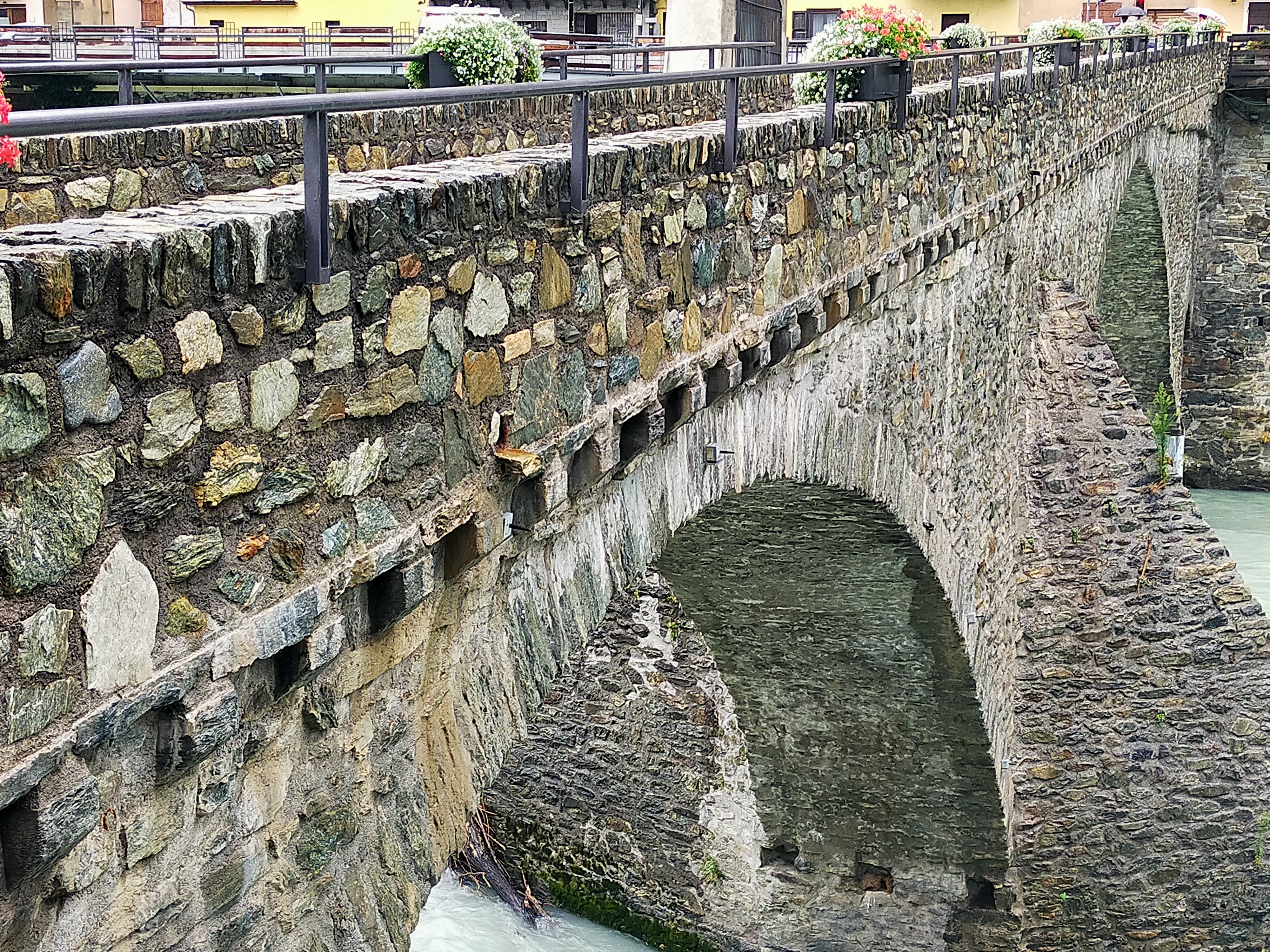07/07/2023 | Partner: Regione Valle d'Aosta
The Hône-Bard Bridge
The “Pontis Bardi” is a symbol of disputes and boundaries between the Lords that alternated over the centuries.
Mentioned for the first time in the accounts of the Châtellenie of Bard in 1272, the original bridge was located in a different place than the current one.
It was rebuilt and restored several times to keep the connection of production activities with commercial traffic along the Via Francigena route active.

Context
The plane of Hône has always been an ideal space to develop agricultural activities and flourishing handicrafts, in close connection with the commercial route that stretched towards the plane on one side and the cross-border regions on the other.
In the years of greatest activity along the Dora River there were numerous water mills: the Molendina pontis Bardi, so named in the accounts. From the modern era, there is also a forge for the processing of metals originating from the iron mines of Roncs-Dessus and Champorcher. This place reveals its historic ties with metal working, mentioned in the Sardinian Land Registry of 1771 as “La Diana”. It has very ancient traditions and reaches its peak in 1902 when H. J. Gossweiler founded a nail factory.
History
The first documents that mention the Pontis Bardis are the computa of the Châtellenie of Bard of the years 1272 and 1273, where the taxes received for its crossing are mentioned. However, it is not the structure visible today, but a masonry bridge located further upstream, in the direction of Aosta, in the town that retains the name of Pont.
Generally designated by the name of Pons Bardi, it is referred to as Pons de Ona only in the account of the expenses incurred in 1277, necessary for its fortification on the occasion of the conflict between the châtelain of Bard and the lords of Pont-Saint-Martin.
The current bridge, despite its medieval shape, dates back to the 18th century and was built in this location to facilitate connections with the new factories and workshops built in Hône, better known as “La Diana”.
The aedicula located in the middle of the bridge, added in the 19th century, is a characteristic element that preserves paintings by the artist Luigi Artari: guardian of the strong need to protect both the bridge and those who would cross it. It was subject to its latest restoration between 1992 and 1993.
Architecture
It’s an arch bridge, whose arches pivot on two central piers characterized by reinforcement spurs both downstream and upstream of the current.
If, as some sources suggest, the bed of the Dora Baltea river was once wider, it is possible to imagine that there are additional arcs connecting the deck with the road network under the square “Calliera”, towards the village of Hône.
The stone parapet, the subject of numerous renovations, is based on a modillion that has a decoration completely similar to a frieze, with continuous alternating of projecting blocks and backward blocks.


